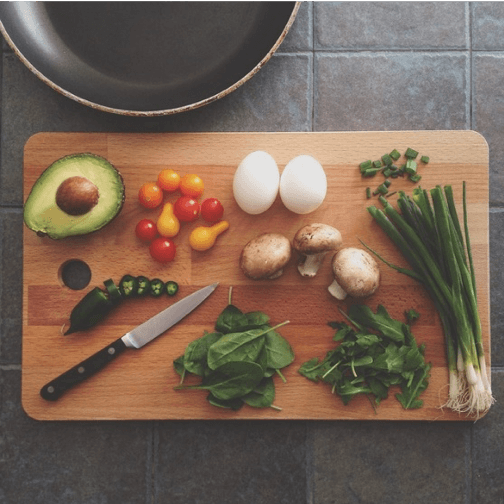The Bariatric Diet Recipes for a New You
After bariatric surgery you will learn a whole new way to eat. For many bariatric patients this critical part of the weight loss journey seems daunting at first. Over time, though, most learn they can achieve their goals in both the short and the long term with the support of a good nutritionist and by closely following their doctors’ instructions.
Over a four to five week time frame you’ll progress through a bariatric diet aimed at helping you heal in the short term and learn healthy eating habits in the long run. The bariatric diet starts with a brief period of liquids only and works your way up to eating six small meals of regular food each day.
We’ve gathered recipes for every stage of your bariatric diet. The recipes follow the five key principles of a healthy bariatric diet.
- High in protein
- Smaller portions
- Low in sugar and fat
- Healthy carbs and fat
- Made from fresh ingredients
This bariatric recipe collection is here to help you find foods that provide the nutrition and consistency you need at each stage of the healing process as well as satisfy your taste buds and hunger
 Explore this collection of bariatric diet recipes. You will find healthier versions of foods you already know and love. Make note of those that are most appealing and try a few ahead of surgery. This will help you decide what ingredients to include on your shopping list in the final days leading up to surgery.
Explore this collection of bariatric diet recipes. You will find healthier versions of foods you already know and love. Make note of those that are most appealing and try a few ahead of surgery. This will help you decide what ingredients to include on your shopping list in the final days leading up to surgery.
Don’t limit yourself to these specific recipes. Use them as inspiration for your own. But be mindful of your nutrition and consistency requirements for each stage. And always consult with your nutritionist with questions or concerns before making any changes to your post-op routine.
You have a choice in the food you’ll eat. You can choose food that you find satisfying.
Bariatric Diet - Phases and Timeline
Here’s an overview of the stages of the bariatric diet you’ll go through when you get home from the hospital. The timeframes reflect the normal schedule for Barix Clinics patients. Your specific diet plan may vary; your own surgeon and nutritionist will provide a schedule to follow.
Week 1: Full Liquids
For the first week you’ll need to focus on drinking 64 oz. of liquid each day. Protein-packed liquids are important to the healing process. You will start to establish the habit of having six small, nourishing meals through the day. Protein will become the centerpiece of meal planning.
Between meals you will sip enough calorie-free liquids to meet the daily liquid goal.
Some of our favorite liquid recipes include:
- Peanut Butter Cup Smoothies
- Breakfast Boost
- Peanut Butter Banana Smoothies
- Pudding Pops
- Strawberry Chocolate Cheesecake Ice Cream
Click here to learn more about liquid diets.
Week 2: Pureed Foods
Foods pureed to a smooth consistency (no lumps, clumps, or chunks) are introduced at mealtime during week two. These foods can be naturally smooth (like applesauce), Stage 1 or Stage 2 off-the-shelf baby foods, or food you puree yourself.
When planning meals, choose your protein first and complete the meal with fruits and vegetables. Focus on eating slowly and savoring your food. This allows your body to accept and comfortably digest the food you’re taking in. You will also feel more satisfied with your meal.
Between meals continue to sip liquids following the 5/30 rule. Stop drinking liquids five minutes before a meal and wait until 30 minutes after a meal to start drinking again.
Week 3 and 4: Soft Foods
Naturally soft foods are introduced at mealtime during weeks three and four. These include finely ground meat or chicken, cooked vegetables with skins removed, and silken tofu.You’ll also continue to sip liquids between meals following the 5/30 rule, eat slowly, and savor every bite.
Week 5: Regular Food
 As you enter week 5 you’ll start adding regular cooked food at mealtime. Your daily food intake will continue to be spread across the day in six small meals.
As you enter week 5 you’ll start adding regular cooked food at mealtime. Your daily food intake will continue to be spread across the day in six small meals.
Food selections will always start with a source of protein that helps you meet your daily protein goal. Fluid consumption between meals, with mostly calorie free beverages, remains a regular part of a healthy bariatric diet going forward.
At this point you’ll be well on your way to adopting bariatric eating practices for life. We’ve found that people who maintain this routine are more successful at reaching their weight loss goals and maintaining their health and weight loss over the long term.
Recipe Tips for Success
Choose wisely
The bariatric diet is designed to help you heal and adopt healthier eating habits. It’s not meant to be torturous. Remember: You always have a choice. You can choose foods and recipes that appeal to you and that you find satisfying. Your Barix Clinics nutritionist is always happy to coach you on how to prepare healthier versions of your favorite recipes.
“Always remember that no matter which surgery you get it is only [one] tool in the tool box of success. It isn’t a miracle cure. You must be dedicated, willing to change your old habits, willing to become educated about the food you are eating and be active to live your best life after weight loss.” Shawn M.
Commit yourself
Having bariatric surgery is an important first step. To be successful with losing weight and keeping it off for the long term, making the commitment to change eating habits makes all the difference.
Reach out for help
Your Barix Clinics nutritionist is always available to help. We know that making these changes takes effort and can be overwhelming. Whenever you have questions or need some guidance, just ask!






